There’s a slew of amazing reasons to help you start gardening with kids. It provides opportunities for hands-on learning about plants and how they grow. You can spend quality time together in nature, leaving screens and video games behind. You could even save a little on the grocery bill by raising your own fruits and vegetables.
These are all fantastic reasons to start gardening!
However, the thought of starting a garden can be overwhelming for parents and with good reason. Just take a little dive into some online gardening resources and you quickly learn there are some considerations to be made before plopping a few seeds into the ground.
Five internet research hours later and you have a plethora of information swirling in your head, and some crucial decisions to be made as well.
Let me save you some time!
I’ve gardened successfully for several years, and just recently installed a brand new raised-bed garden in our backyard.

The steps below will help you start a simple vegetable garden for your family, and will also enable you to make beautiful gardening memories with your kids.
Let’s get started!
Basic Steps to Start Your Garden
1-Select a Location For Your Garden
Ideally, most gardens need 6-8 hours of sunlight. We have a spacious yard, but chose to place the garden in a location to the side of our backyard for four reasons.
One, placing it off to the side allows for open space for the kids to play and run without a garden in the way.
Two, it’s the area that receives the most sun.
Three, the other side of the yard can tend to flood with heavy rains.
Lastly, my husband isn’t a fan of front-yard gardens.
2-Decide On Materials For Your Raised Beds
I have always chosen to garden with raised beds. While there are pros and cons to both raised bed gardening and in-ground gardening, we prefer raised beds for several reasons. I like how raised beds look: neat, clean and contained. Raised beds also allow for more control over soil components, drainage, and weed control.
My first raised bed garden was constructed from 2 x 6’s that were once an old wheelchair ramp. It was a fantastically cheap option for our family at the time, but I also never considered the cons involved with using pressure treated lumber.
In retrospect, my hope is that any negative chemicals in the wood were long gone due to its exposure to the elements over several years, but I guess I’ll never know. You can read more about the using pressure treated lumber for your raised beds.
There are several raised bed options you can investigate, all of them having their own pros and cons (of course!)
At the end of the day, my husband and I splurged on real cedar. Why? It’s beautiful, naturally insect resistant, less prone to bowing or rotting over time, and it’s not treated with chemicals.
3-Construct the Garden Beds
I’m thankful my husband is handy with wood projects, as he did all the heavy lifting and constructing of the beds.
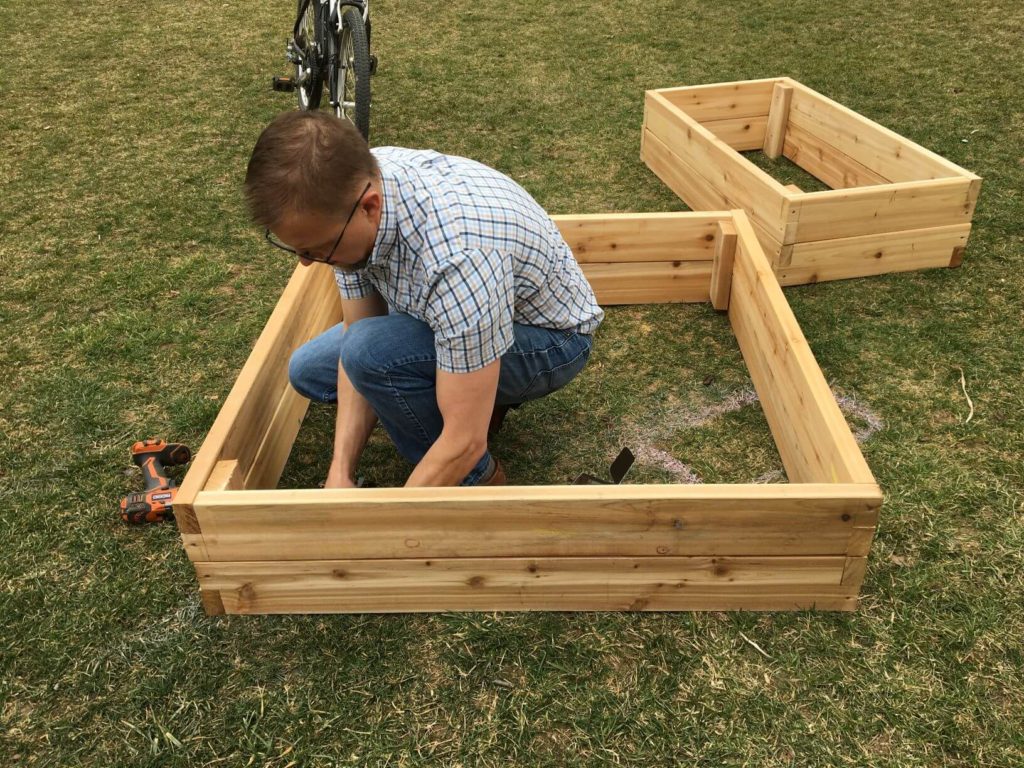
There are so many online tutorials for constructing raised garden beds. We harvested ideas from a couple of different ones to craft our beds. At the end of the day, we went for a typical raised bed that looks like this:
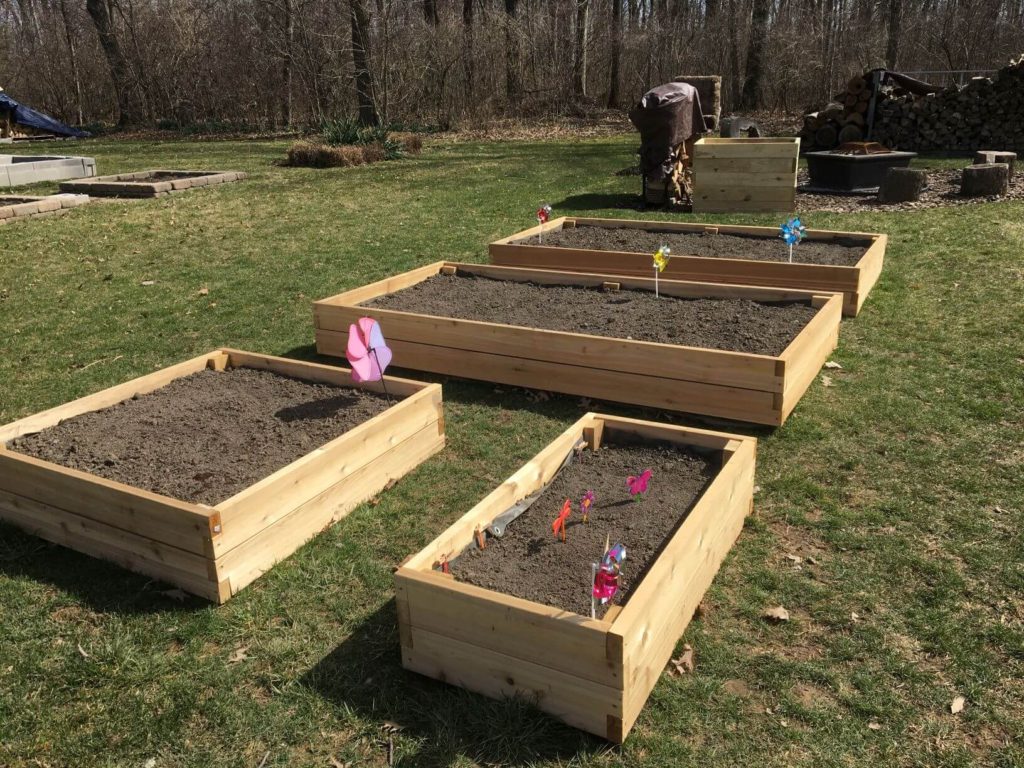
We purchased nineteen 2 x 6 x 8 ft. cedar boards. This allowed us to make two beds that are 4 x 8 ft. (6 boards per bed), one bed that’s 2 x 4 ft., and one bed that’s 4 x 4 ft. All of the beds are 1 ft. high. Also, we notched the corners and used cedar 2 x 4’s for additional support and to help anchor them in the ground.
There are many raised bed kits you can purchase, and while expensive compared to a DIY project, it’s still a worthy option if you aren’t interested in crafting your own, or lack the tools to do so.
4-Fill the Garden Beds With Soil
We used a local mulch and soil company that has a “gardener’s blend” soil option, and used approximately 2 yards of soil to fill our 4 beds. Ideally, this soil will have rich nutrient components that will get your garden off to a great start.
Keep in mind, you will want to amend your soil each season. There are many things you can find at your local garden center to accomplish this, or you can easily start making your own compost.
5-Invest In a Compost Bin And Rain Barrel
I highly suggest creating your own backyard compost. You can purchase bagged compost to enrich your soil, but with a good composting system of your own, you will have what gardeners call black gold to add to your garden each year.
We purchased this composter.
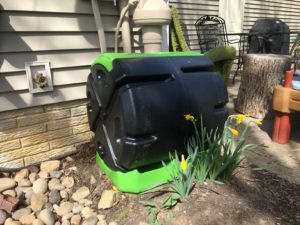
Additionally, there are numerous DIY options you could try as well. On our first gardening go-round, we used a simple compost bin, however it was not covered and was frequented by animals and could smell quite rotten.
Whatever you do, make sure it’s closed off to critters, and is easy to turn, roll, or tumble in some way. Be sure to learn about what you can and can’t compost.
Additionally, a rain barrel is free water for your garden.
FREE.
It’s also teaching our kids the importance of conservation. Here’s ours:
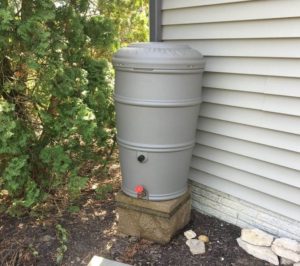
Be sure to investigate if there are any programs in your county that may offer rebate programs for rain barrels or compost bins. We’ve taken advantage of these in the past.
6. Plant Your Garden!
It’s the part everyone looks forward to-planting time! Growing and planting seasons vary from region to region, so it’s best to consult resources specific to your area. Typically, seed packets will advise what months various items can be planted.
In the Midwest, we are still having some cold weather nights and danger of frost, but it’s the perfect time to plant things that like cool weather like peas, carrots, and onions.
Once the weather warms a bit, we’ll be planting tomatoes, yellow squash and zucchini. Our 4 x4 ft. garden bed will become our strawberry patch, and our small 2 x 4 ft. bed is currently in the hands of our preschooler. I’m not quite sure what she’ll want to plant!
It’s a great idea to write down what you planted and where. Not only will this help you remember what varieties of seeds performed well, but it will keep you from planting the same things in the same part of the garden each year, which is a big gardening no-no!
I’ve created a five page garden planner you can use to:
- Plan out your garden space,
- Record what you’ve planted and where
- Keep track of your garden spending so you don’t go over budget (if you have one!), which is super easy to do.
Now that you’ve invested time and money into your gardening adventure, how can you help the kids get involved? They may not be interested right off the bat, or they may view it as your project and not theirs.
Here are a few tips to increase kids’ involvement, interest, and buy-in:
Tips to Get Kids Involved in Gardening
1-Include Them In Choosing What To Plant
Sometimes our kids have very little say in their day-to-day. We make a lot of choices for them. Here’s a chance to let them pick exactly what they’d love to grow.
You might be surprised by their choices!
2-Allow Them to Have Their Own Garden Space
Let them be responsible for the weeding and watering of their portion so they can understand the love and labor that goes into growing food.
Labeling what’s planted and putting some garden decorations like pinwheels or painted rocks will help personalize their space.
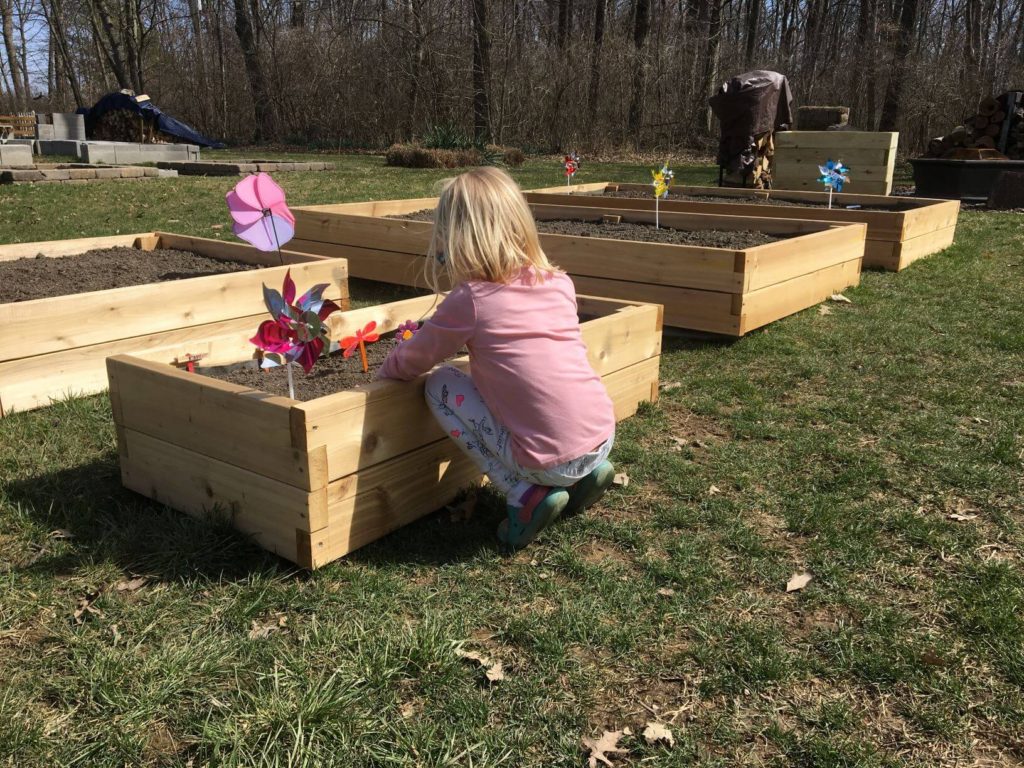
3-Purchase Equipment That Is Child-Sized
A small watering can that won’t be too heavy, garden gloves for little hands, and a little kneeling pad, will ensure they are appropriately equipped for work in the garden.
Top Tips for Parents Gardening With Kids
1-Allow Work In the Garden To Be Fun
Don’t turn everything into a lesson. Sometimes, it’s just fun playing in the dirt.
2-Allow the Garden To Feed Your Soul
A friend once advised me to always plant some flowers in my vegetable garden. Not only are several varieties of flowers bug and pest deterrents (think Marigolds and Petunias), but they really do make the garden special and feed the soul.
Other Garden Options Besides Raised Beds
Perhaps it’s not the best timing for a large garden, or the resources aren’t in your budget right now.
You don’t have to miss out!
Consider a container garden on the patio. You can keep things simple with a few tomato plants and some herbs. You can basically grow anything and everything you can think of in a container. This can be a great budget-friendly option.
For several years, we rented our home and so we only container-gardened. Once we moved into the home we own now, we were too tied up with other projects to invest in a garden, and I wasn’t feeling up to all the work that a garden entails. Instead, we visited the farmer’s market.
However, because my son was willing to do the work himself, he grew a few tomatoes, herbs, a pumpkin and some flowers in a patch of dirt beside our patio.
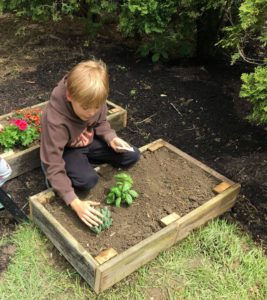
I wasn’t involved much at all, but he quickly learned the labor of a garden pretty quickly. He grew weary of watering and weeding on several occasions, but he was proud as a peacock when I used the tomatoes, cilantro and basil from his very own garden!
Additional Resources for Gardening With Kids
There are so many excellent resources you can use once you start gardening with kids. I’ve put together a few that will help you incorporate gardening activities in your homeschool.
Gardening Unit Study| Free Homeschool Deals
Best Gardening Books for Kids| PBS.org for Parents
Garden Games for Kids| Bonnie Plants
Creative Kids Garden Crafts| Crafts By Amanda
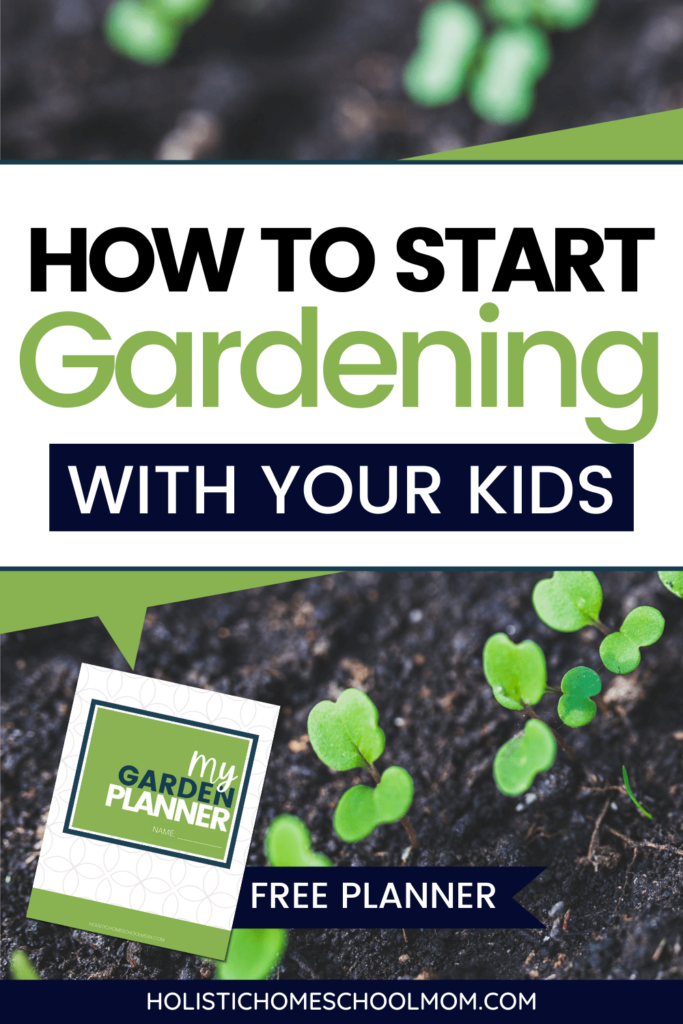
Garden Therapy
Enjoy your gardening experience! Gardening is all about trial and error and learning what you like to grow and don’t; which vegetables are worth the work and which aren’t. You will gain skills and knowledge along the way.
Remember, no one starts out as a master gardener and that’s not your goal anyways. Your goal is to just start gardening with your kids. You can even include gardening in your homeschool!
Don’t overthink it and don’t be discouraged, and by all means, don’t let it rob your joy.
Keep things simple and manageable at first, and be blessed by the opportunity to spend time in nature, while nurturing your most precious relationships.

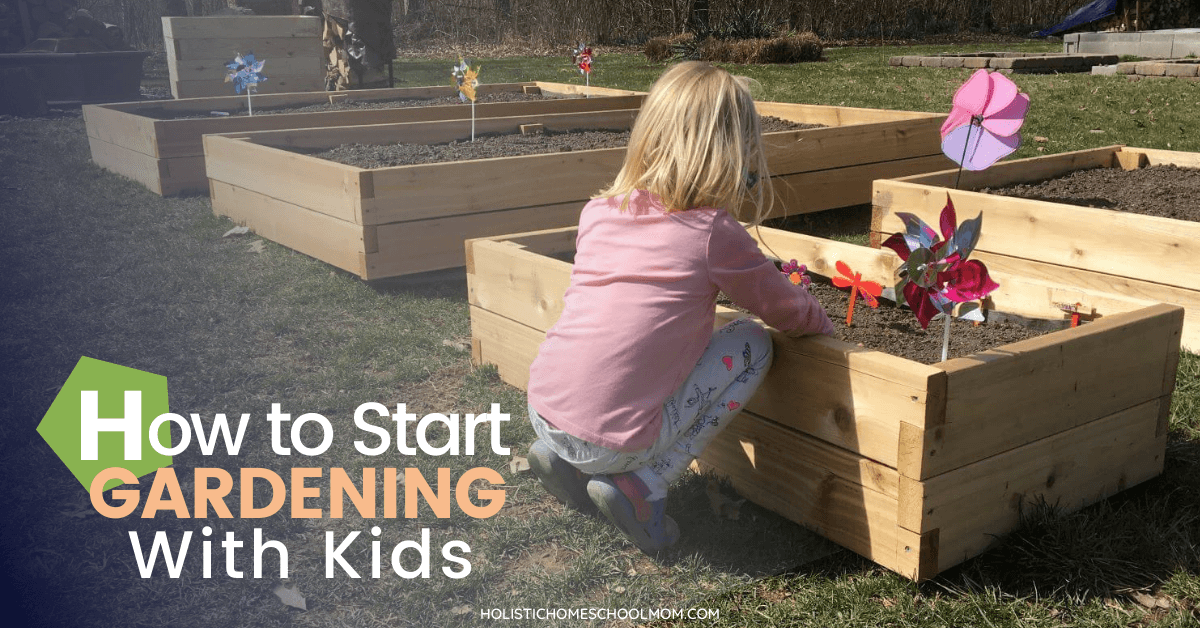
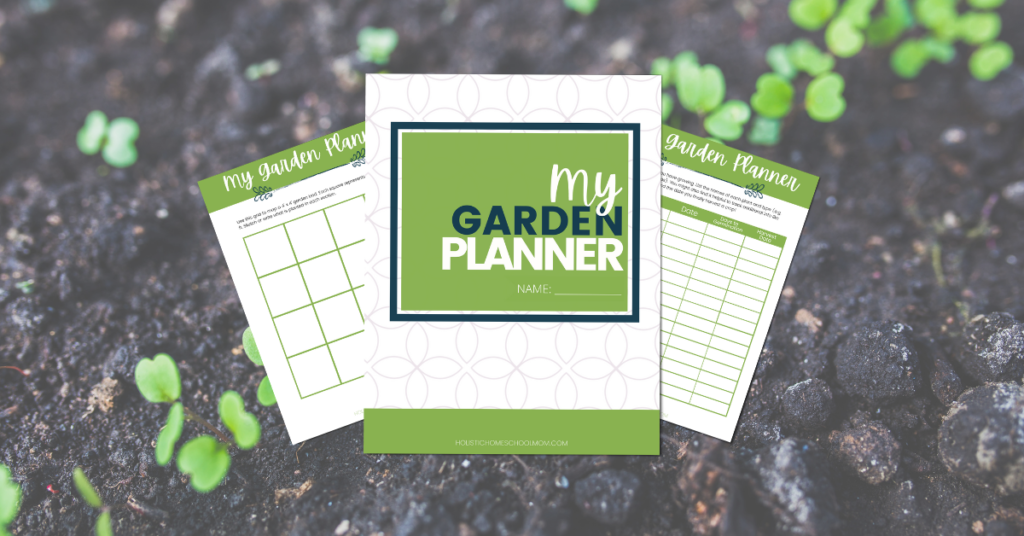

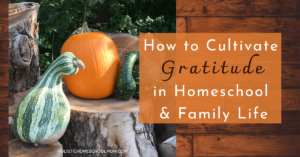
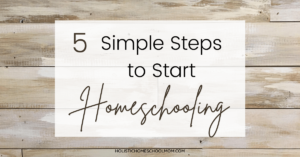
I came to your page through a link that you had an herbology type lesson but I do not see it? Do you have one?
Hi Sharon,
Hmm. That’s interesting- I don’t have an herbology type lesson. Just two posts: one about gardening with kids and one about including gardening in your homeschool.